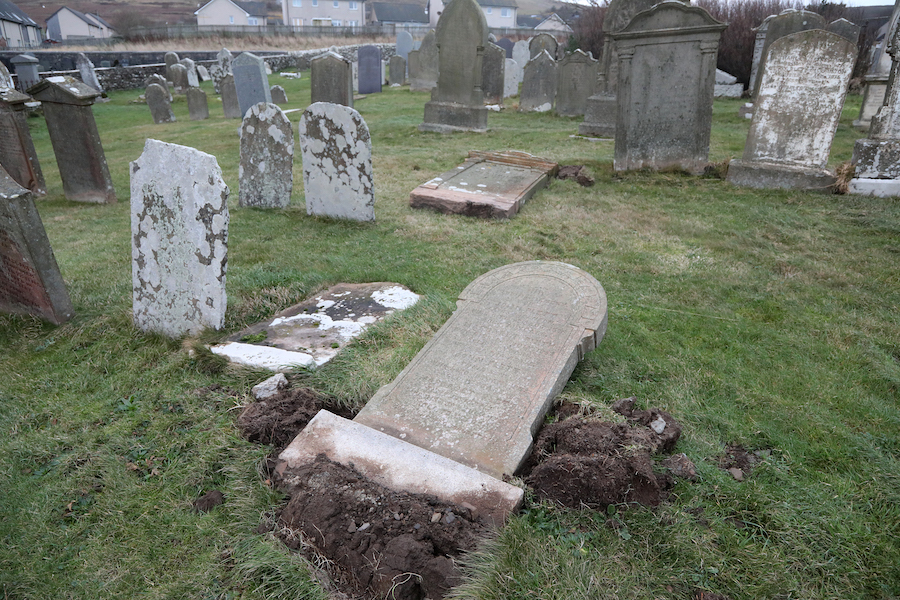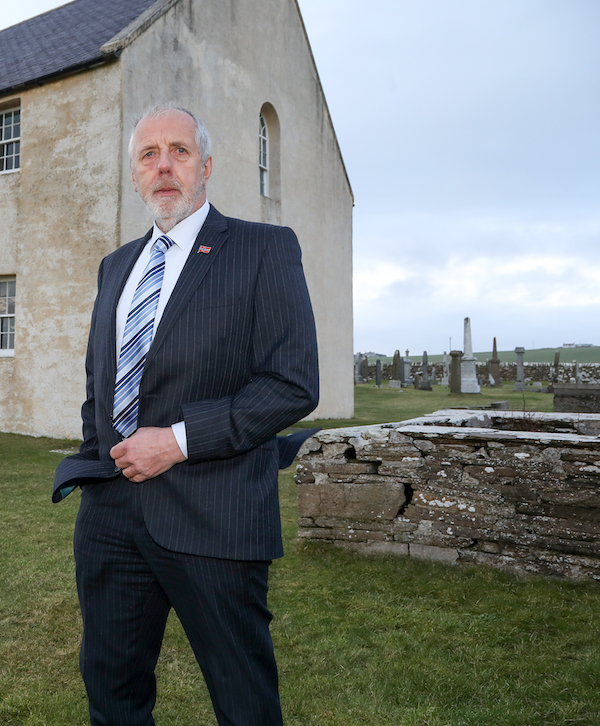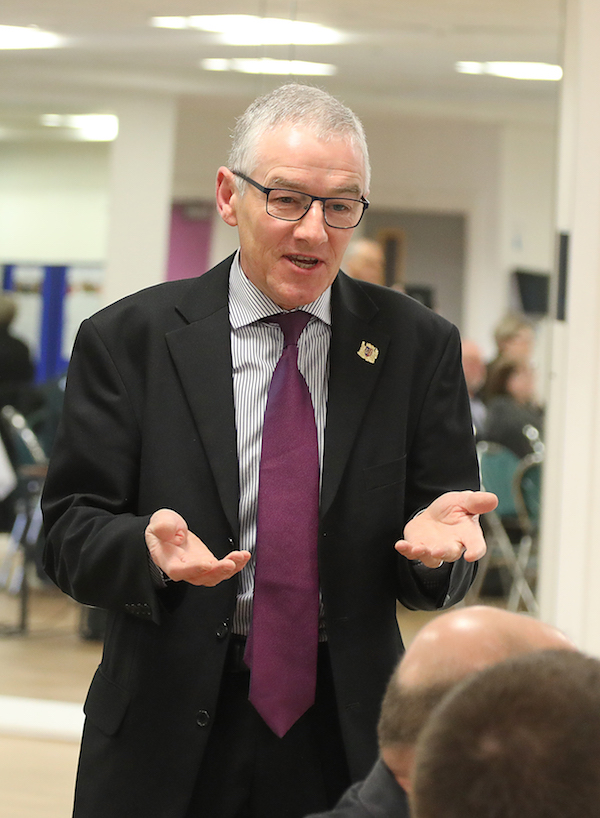Kirkyard investigation prompts 22-point action plan
An OIC investigation has uncovered “significant weaknesses” in a controversial safety scheme, which saw hundreds of Orkney headstones taken down — to the distress of relatives, who claimed they had never been officially informed.
The programme of work, undertaken by Orkney Islands Council last May, saw a review of all 47 kirkyards in the county. But its integrity was soon called into question by members of the public, concerned that gravestones were being laid flat without clear notice. Meanwhile, a council insider accused the local authority of failing to abide by guidelines for testing the memorials.
A report to this Thursday’s meeting of the Council’s Monitoring and Audit Committee has set out key findings, and has made a number of recommendations for how the programme should be improved for any future works.
In all, 22 recommendations were made — with six described as high priority.
According to an official statement from Orkney Islands Council, key findings of the report were that:

- There was “limited assurance” on the processes and procedures relating to memorial safety in burial grounds. This means that significant weaknesses were found during an investigation carried out by the Council’s Internal Audit team.
- The significant weaknesses identified included — lack of an adequate programme of inspection with this being the first full survey of Orkney’s burial grounds since 2004; a lack of dedicated testing policy or procedure documents for the burial ground safety work; a lack of awareness from lair owners that they were responsible for the maintenance of their headstones; weaknesses in the way in which instructions were issued to contractors carrying out the work and failure to apply to for consent or for planning permission for the laying down of some of the oldest stones at St Magnus Cathedral and St Magnus Kirk in Birsay.
- The works carried out by the council had to address health and safety risks whilst also operating in a proportionate and sensitive manner towards the public, including bereaved families. Like other local authorities, finding the delicate balance between safety and compassion had been a challenging task.
- The council faced additional challenges in the limited number of suitably accredited and specialised stonemasons in Orkney — and a difficulty in sourcing experienced tradespersons from outside the county.
- The work had not progresses as expected with more headstones laid down in the first 12 kirkyards than expected — 431 compared to 155.
- Despite a number of press releases – and subsequent press articles and radio interviews, as well as temporary signage at the burial grounds, many of the public were not aware of the works and why they were happening, causing concern, upset and distress to local communities.
The six high priority recommendations were that:

Last week, Mr Johnston said he was “delighted” with progress to re-erect the memorials.
- Every reasonable attempt should be made to reinstate headstones that have been laid flat, where it is safe to do so as soon as possible.
- The council should carry out a full inspection programme at least every five years. Larger monuments that are at risk may require more frequent inspection.
- Lair holders responsibilities should be added to the council’s Code of Practice and be emphasised in correspondence with purchasers of lairs
- The Council should prepare and approve both policy and procedural documents that can now incorporate Scottish Government guidance.
- Retrospective planning consent should be applied for where necessary
- The Council should advise Historic Environment Scotland should there be any applicable headstones assessed to be made safe.
According to OIC, a further five recommendations have already been progressed — these are:
- Retrospective planning consent should be applied be for where necessary and without delay where headstones are covered by listed status
- Staff and contractors who work in burial grounds should be reminded that they should report to the Council any headstones that appear to have become dangerous
- Each individual headstone to be laid flat is clearly identified in the narrative of the order raised
- The Council should attend the site, verify and confirm adding any headstones/memorials to the list to be laid down, as per procedures stated to Members and agreed with contractors
- All orders as to headstone repair and make safe is by written, not a mixture of written and verbal instruction.

Additional recommendations included:
- Going forward, inspection criteria approaches should be further developed to fully consider different types of memorials, with tolerance levels set by type, and specific local knowledge, including heritage value of the headstone.
- Tracing and communication with lair owners be focused where this is reasonable practical in achieving success
- It should be considered that headstones at risk of being laid down are published on the Council’s website
- Social media should be considered as a means of enhancing awareness to the issue of monument safety
- It should be ensured Community Councils are given adequate notice as to when works will commence and should be provided with a list of memorials identified as dangerous.
According to OIC, progress in delivering and completing the actions that have been requested will be reported to future meetings.
Work to re-erect headstones in Orkney’s cemeteries is continuing with five cemeteries now completed, and one more expected to be completed shortly.
Work will also be getting underway to identify and make safe stones where required in the remainder of Orkney’s kirkyards as part of a continuous programme of public safety over the months and years ahead.
The full report is available here – https://www.orkney.gov.uk/Files/Committees-and-Agendas/Monitoring-and-Audit/MA2019/MA26-09-2019/I07.1__Burial_Grounds_Memorial_Safety_2019_20.pdf. A recording of the meeting will be available in due course on the Council website www.orkney.gov.uk
For the full story, pick up this Thursday’s The Orcadian.

